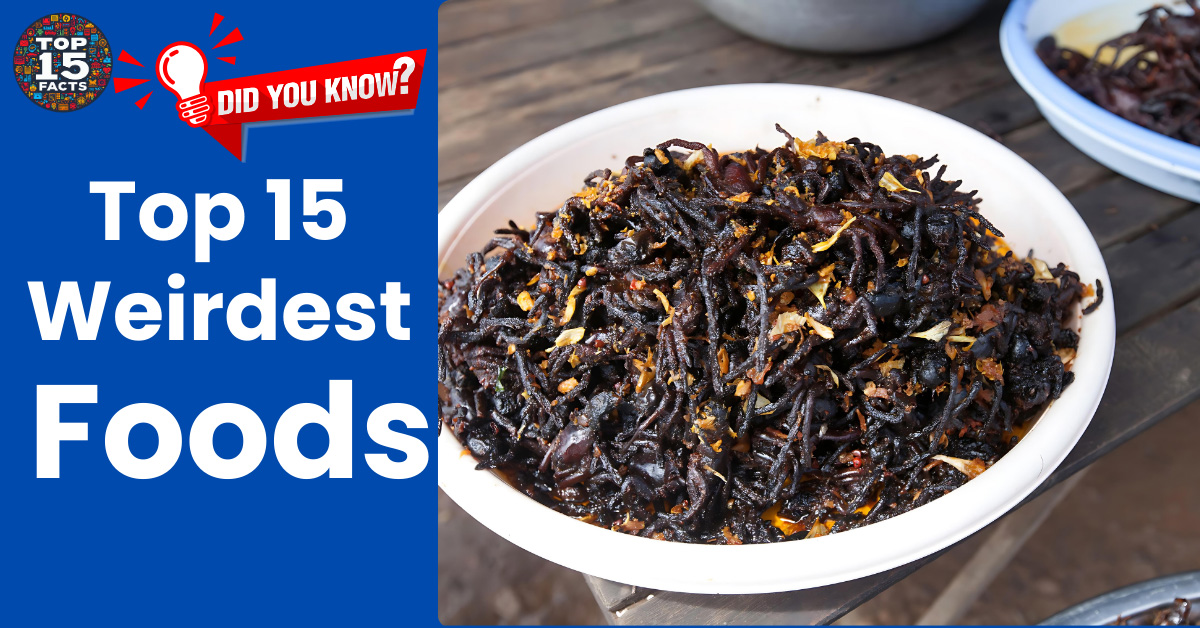Introduction
Food connects cultures, but sometimes those culinary connections get a little… weird. The world is full of unusual and often shocking foods that push the boundaries of what we consider “normal.” From insect delicacies to fermented wonders, these bizarre dishes challenge our perception of what’s edible. Get ready to embark on a wild food adventure as we unveil 15 of the world’s most bizarre eats!
15 Weirdest Foods
- Casu Marzu (Italy): A cheese infested with live maggots.
- Balut (Philippines): A partially developed duck embryo boiled inside its shell.
- Century Eggs (China): Eggs preserved for months resulting in a black and green yolk.
- Huitlacoche (Mexico): A corn fungus considered a delicacy.
- Chicken Feet (Asia): A popular dim sum dish with a gelatinous texture.
- Hákarl (Iceland): Fermented shark with a strong ammonia smell.
- Escamoles (Mexico): Ant larvae, often sautéed with butter and onions.
- Fried Spiders (Cambodia): A crispy snack seasoned with garlic and salt.
- Witchetty Grubs (Australia): Large, wood-eating larvae eaten raw or cooked.
- Sannakji (Korea): Live baby octopus chopped and served while still moving.
- Surströmming (Sweden): Fermented herring notorious for its pungent smell.
- Kopi Luwak (Indonesia): Coffee beans partially digested and excreted by civets.
- Fugu (Japan): Potentially lethal pufferfish prepared only by licensed chefs.
- Durian (Southeast Asia): A fruit with a pungent odor but a sweet, custard-like flavor.
- Snake Wine (Vietnam): A rice wine with a whole snake steeped inside.
1. Casu Marzu (Italy): Cheese with Live Maggots
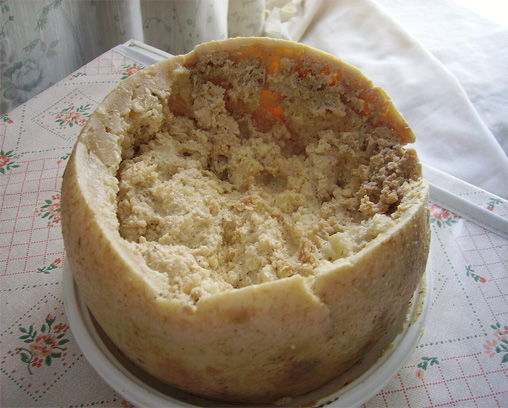
Imagine a cheese so sharp and aged, it harbors live maggots! That’s Casu Marzu, a Sardinian sheep’s milk cheese with a truly unique production process. The cheesemakers deliberately introduce cheese fly larvae to the cheese. As the maggots munch on the cheese, they break it down, creating a creamy texture and a stronger flavor. However, the real kicker is consuming the cheese with the maggots still wriggling inside.
Why it’s Weird: Let’s face it, the idea of eating cheese with live maggots is enough to turn most stomachs. The sight and sensation of the moving insects, coupled with the strong flavor, is a major departure from what most consider cheese!
2. Balut (Philippines): A Boiled Duck Embryo
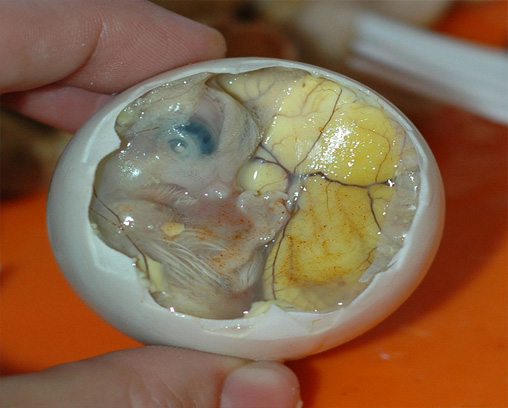
Balut is a popular Filipino street food that pushes the boundaries of what we consider “food.” It’s a partially developed duck embryo, usually around 17 days old, boiled right inside its shell. The entire package, including the broth, developing beak, feathers, and bones, is eaten. For adventurous foodies, the flavor is described as savory and slightly gamey.
Why it’s Weird: The concept of eating a developing chick is a cultural taboo for many. The visual of the beak and tiny formed features can be unsettling, making Balut a strange sight for those unfamiliar with the dish.
3. Century Eggs (China): Preserved Eggs with a Dark Secret
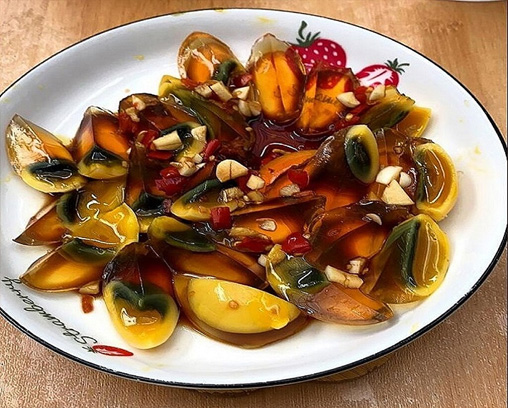
Century eggs, also known as preserved eggs or thousand-year eggs, are a Chinese delicacy with a unique appearance and flavor. These eggs are made by coating duck, chicken, or quail eggs in a mixture of clay, ash, salt, and lime, and leaving them to ferment for weeks or even months. The result? A dark, almost black egg with a gelatinous white and a creamy, dark green or black yolk.
Why it’s Weird: The transformation of a regular egg into a dark, almost unrecognizable object is certainly unusual. The strong ammonia smell and dark color make it a visually unappealing food for some.
Read More: 15 Food Lies You’ve Been Fed – Time to Get the Facts
4. Huitlacoche (Mexico): A Corn Fungus Fit for Foodies
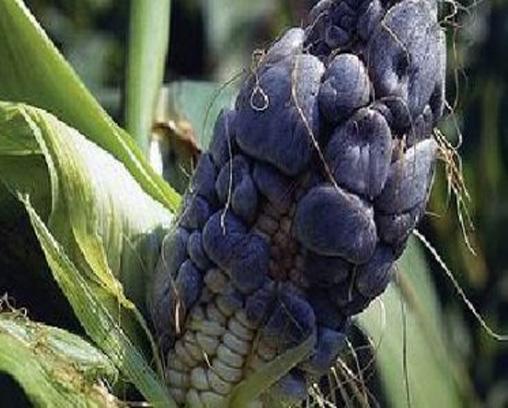
Huitlacoche, also known as corn smut, might sound like something to avoid, but in Mexico, it’s a prized culinary ingredient. This black, fungus-like growth infects corn cobs, creating dark, truffle-like galls. Huitlacoche has an earthy, slightly smoky flavor and is often used in quesadillas, soups, and sauces.
Why it’s Weird: The sight of a black, fungal growth on corn can be off-putting. However, huitlacoche’s unique flavor and texture have earned it a place in Mexican cuisine.
5. Chicken Feet (Asia): Gelatinous Goodness or Just Gross?
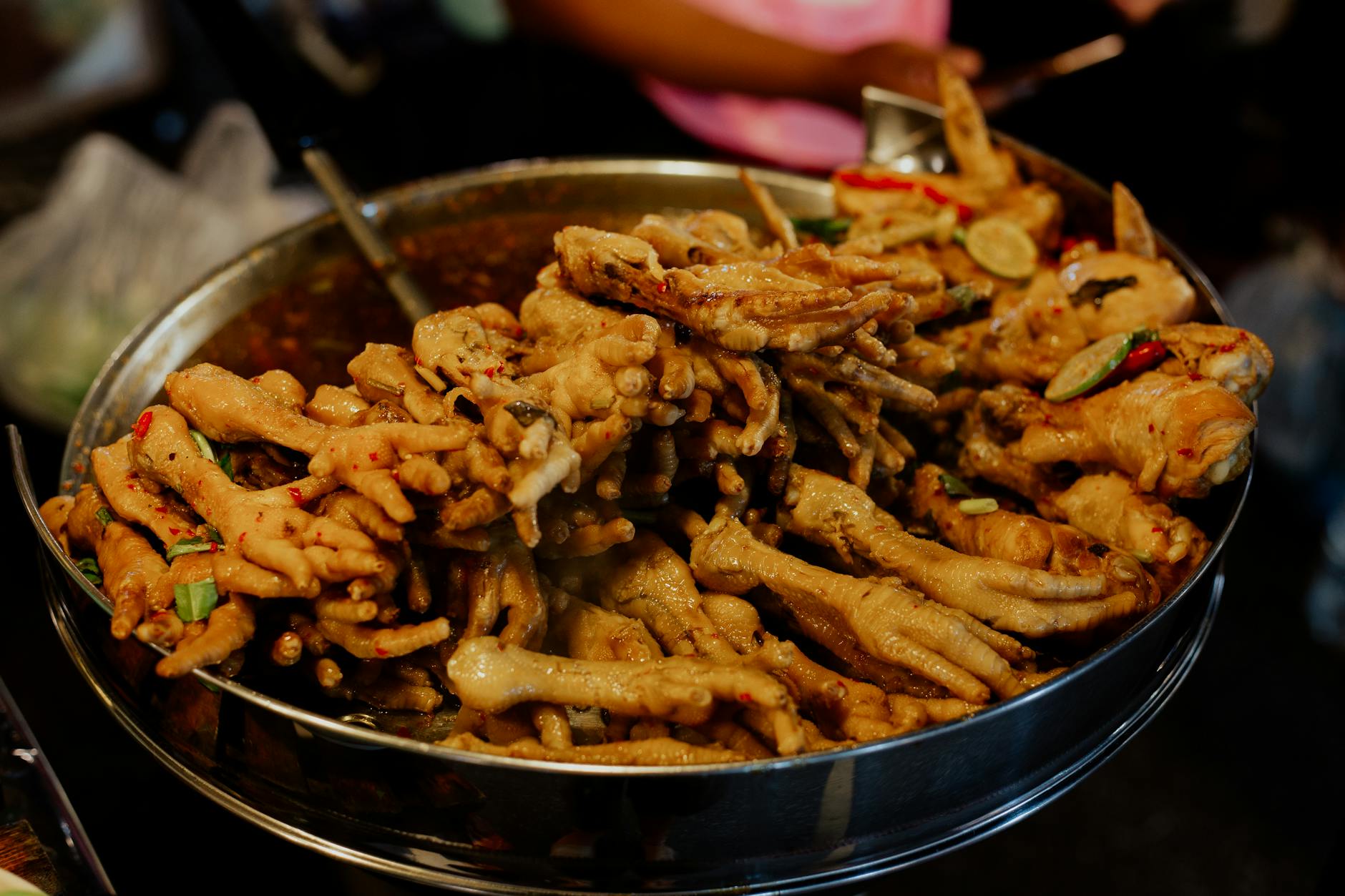
Chicken feet might not seem like the most appetizing part of the bird, but in many Asian countries, they’re a beloved dim sum dish. The feet are deep-fried or braised, which softens the tough skin and cartilage, creating a gelatinous texture that some find quite appealing. The flavor itself is mild, often taking on the flavors of the sauces they’re cooked in.
Why it’s Weird: For many Westerners, the idea of eating chicken feet is strange. The bony appearance and the thought of gnawing on tendons and cartilage can be unappealing. Yet, those who love chicken feet see them as tasty little snacks with a unique texture.
6. Hákarl (Iceland): Fermented Shark That Packs a Punch
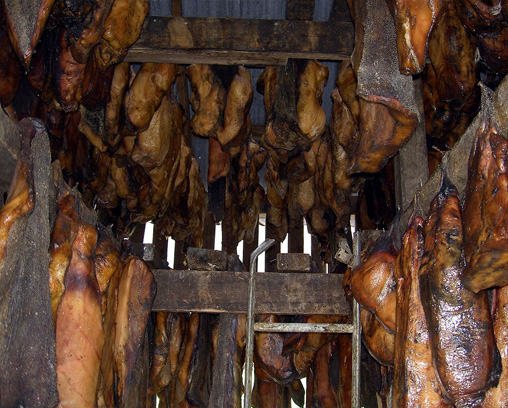
Image Source: wikipedia By Chris 73 / Wikimedia Commons
Hákarl is an Icelandic delicacy that’s not for the faint of heart (or nose!). It’s made from Greenland shark, which is fermented for months and then hung to dry. The result is a pungent, ammonia-scented dish with a strong, almost cheesy flavor. Hákarl is usually eaten in small cubes as a sort of culinary challenge.
Why it’s Weird: The smell alone is enough to make most people turn away. The rotting flesh of the shark gives hákarl an incredibly intense aroma and flavor that is unlike anything else you’ll encounter.
Read More: Top 15 Facts: Fun Food Discoveries That Will Surprise You
7. Escamoles (Mexico): Ant Eggs with a Creamy Bite
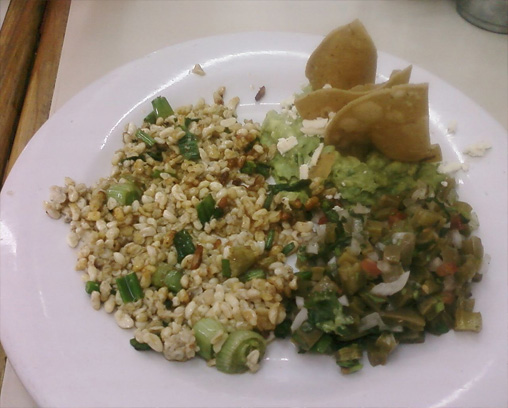
Sometimes called “Mexican caviar,” escamoles are the edible larvae of giant black ants. They are often harvested from agave plants and have a slightly buttery, nutty flavor. Escamoles are typically sautéed with butter, onions, and chilies, and used as a filling for tacos or omelets.
Why it’s Weird: Eating insects may be commonplace in some cultures, but for many, the idea is quite strange. The concept of consuming ant larvae can be unappealing, and their appearance may make them seem even less like food.
8. Fried Spiders (Cambodia): A Crispy, Crawly Snack
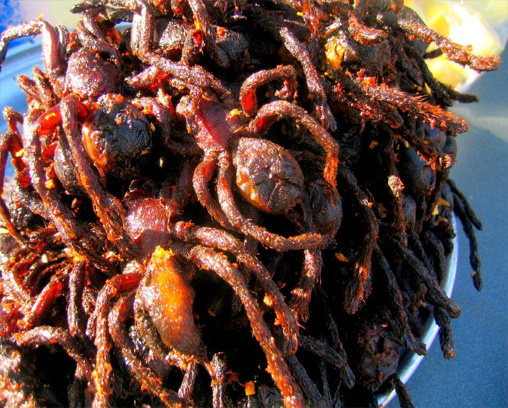
In Cambodia, large tarantula-like spiders are a popular street food snack. The spiders are seasoned with salt, garlic, and sugar, then deep-fried until crispy. While the hairy legs might look a bit intimidating, the insides apparently have a soft texture and a mild flavor somewhat resembling chicken or crab.
Why it’s Weird: Most people have a pretty strong aversion to spiders in general, let alone eating them! The idea of consuming a large, deep-fried arachnid is enough to send shivers down most spines.
9. Witchetty Grubs (Australia): Big, Squishy, and…Flavorful?
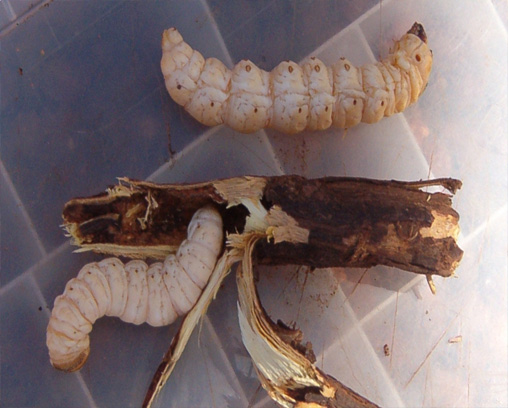
These large, plump, wood-eating larvae are a traditional food source for Indigenous Australians. They can be eaten raw – with a flavor said to resemble almonds – or lightly cooked over coals. Their soft, squishy bodies and simple flavor might not be everyone’s cup of tea, but they’re a good source of protein.
Why it’s Weird: Let’s be honest, the idea of eating a giant grub isn’t exactly mainstream! Their soft, squishy appearance and the knowledge that they munch on wood make them a pretty strange dish for most.
Read More: Beyond Croissants: 15 Surprising Facts About French Cuisine
10. Sannakji (Korea): Live Octopus That Fights Back
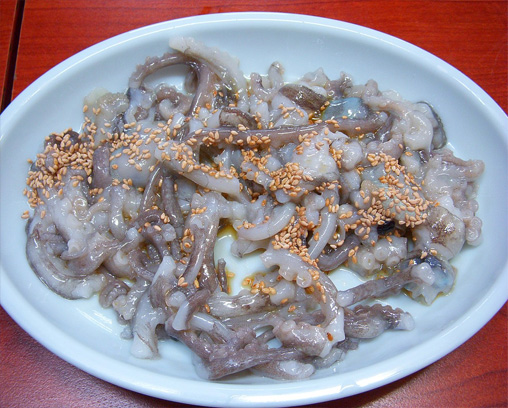
Sannakji takes “fresh seafood” to a whole new level. It’s made from small live octopuses that are chopped into pieces and served immediately, often with sesame oil and a bit of seasoning. The tentacles still wriggle and squirm even after they’re detached, and diners need to chew carefully to avoid the suction cups from attaching to their throats.
Why it’s Weird: Eating something that’s still actively fighting back is a pretty wild concept! The sensation of the tentacles moving on the plate and in your mouth is undoubtedly strange and a little unsettling for many.
11. Surströmming (Sweden): The Stinkiest Fish in the World
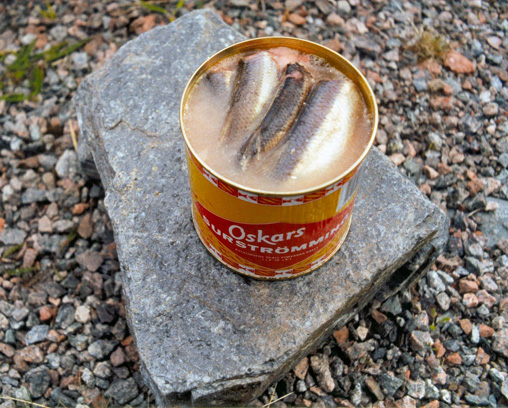
Surströmming is fermented Baltic herring, infamous for its incredibly pungent aroma. It’s fermented for months, developing a strong smell that can only be described as…well, something between rotten eggs and very old cheese. It’s usually eaten with flatbread, onions, and potatoes to offset the intense flavor.
Why it’s Weird: Honestly, the smell is the real shocker here! Surströmming is legendary for its ability to clear a room in seconds. The fact that people willingly eat something that smells that bad is mind-boggling for most.
12. Kopi Luwak (Indonesia): Coffee from Poop? Yep
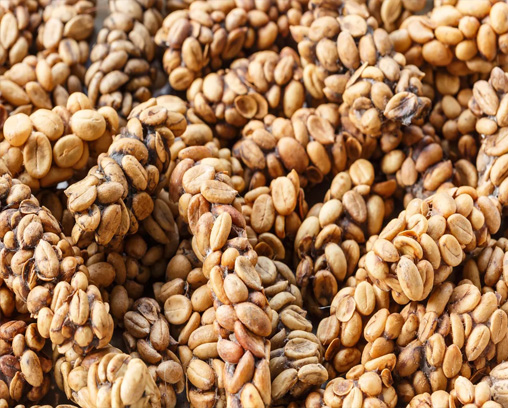
Kopi Luwak is one of the most expensive (and controversial) coffees in the world. The coffee beans are harvested from the droppings of Asian palm civets, small cat-like creatures. The civets eat the coffee cherries, and the beans undergo partial digestion before being excreted. These beans are then cleaned, roasted, and ground for an allegedly smoother and less bitter coffee.
Why it’s Weird: The idea of drinking coffee made from animal poop is strange, to say the least. However, some people swear the digestion process enhances the flavor of the beans.
Read More: Discover the Delicious World of Spanish Food: Facts, Flavors, and FAQs
13. Fugu (Japan): A Deadly Delicacy
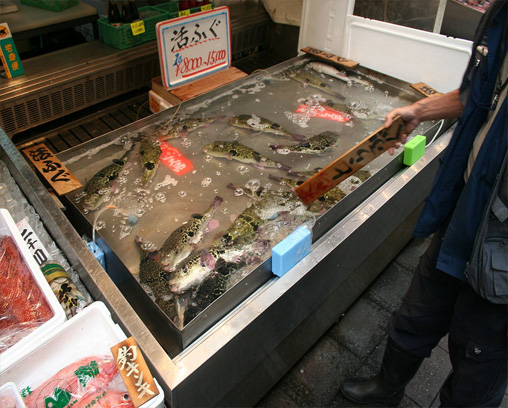
Image Source: wikipedia By Pangamut
Fugu, or pufferfish, contains a potent toxin that can be lethal if not prepared correctly. Only specially licensed chefs in Japan are permitted to prepare this dish. When done right, the thinly sliced fugu has a mild flavor and slightly chewy texture.
Why it’s Weird: The element of danger is what makes fugu such a strange food. The idea of eating something that could potentially kill you if prepared incorrectly is a thrilling and terrifying prospect for some.
14. Durian (Southeast Asia): Smells Bad, Tastes…Good?
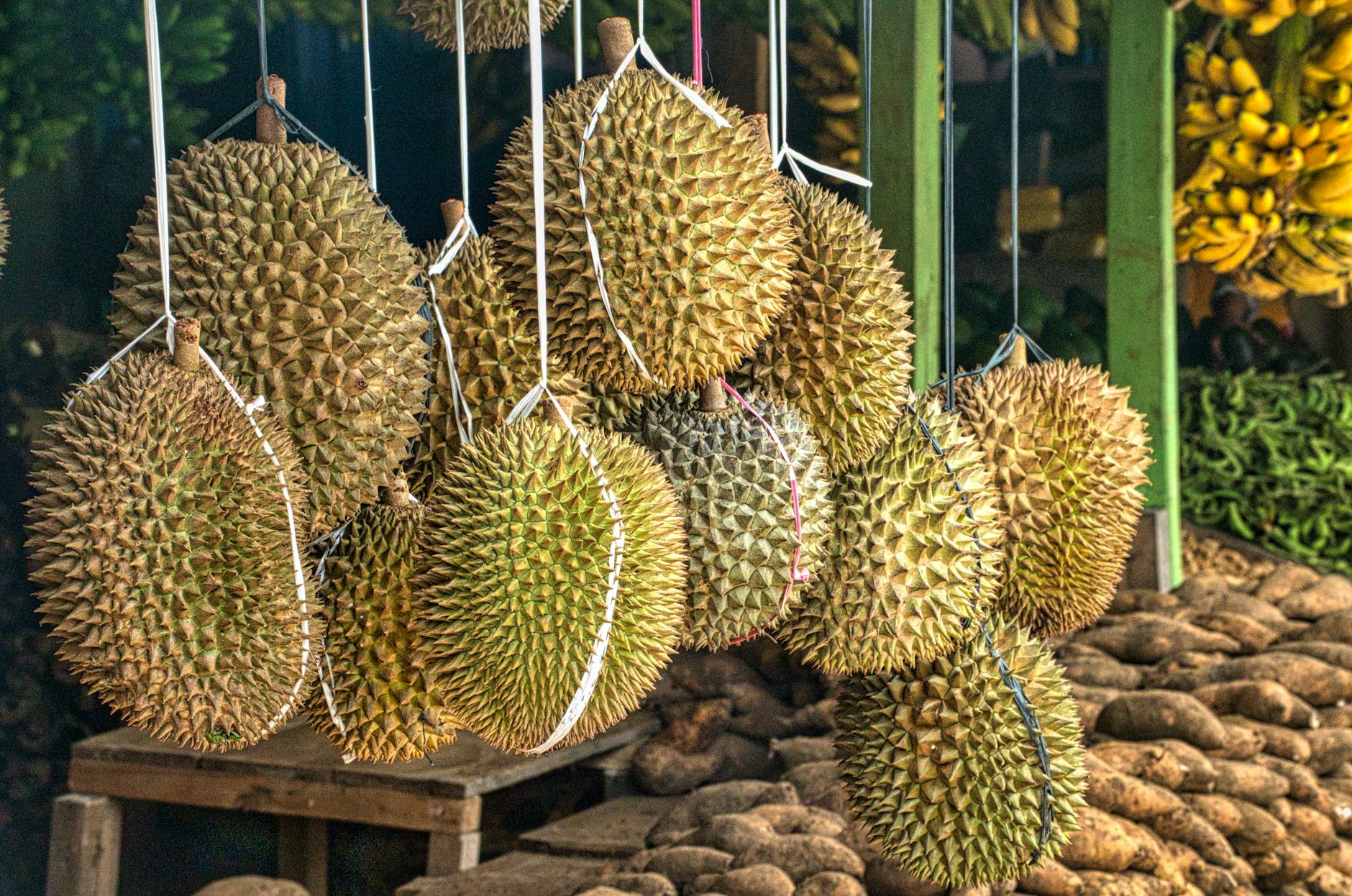
Durian is known as the “King of Fruits” in Southeast Asia, but its pungent odor has earned it bans on public transportation in some places. The smell is described as a mix of rotten onions, gym socks, and sweet fruit. However, fans adore its creamy, custard-like flesh and complex sweet and savory flavor.
Why it’s Weird: Durian is a classic case of “don’t judge a book by its cover” (or its smell!). It’s truly bizarre that something that smells so intensely bad can have such a devoted following based on its unique flavor.
15. Snake Wine (Vietnam): A Shot with a Bite
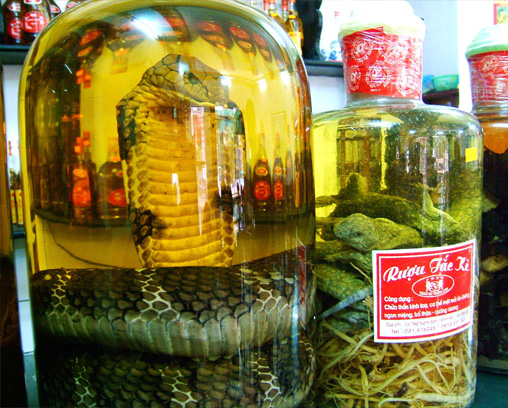
Snake wine is a traditional alcoholic beverage found in some parts of Southeast Asia. It’s made by infusing whole snakes (sometimes venomous ones!) into rice wine or grain alcohol. The snake and its venom seep into the liquid, supposedly imparting medicinal properties.
Why it’s Weird: Submerging a whole snake in your booze seems more like a dare than a drink! The visual is striking, and the idea of the snake’s venom infusing the alcohol is both intriguing and a bit unsettling.
Conclusion:
This journey into the world of weird foods shows just how diverse and fascinating culinary traditions can be. What might seem repulsive in one culture is a prized delicacy in another. While some of these dishes might make you squirm, they all offer a unique glimpse into different food cultures and push the boundaries of what we consider edible. And hey, if you’re feeling particularly adventurous, maybe one of these bizarre foods could end up being your new favorite!
15 FAQs ( Frequently Asked Questions):
-
Are any of these foods actually dangerous?
Some certainly involve a level of risk. Fugu, if not prepared correctly, contains a deadly toxin. Fermented foods like hákarl and casu marzu can harbor harmful bacteria if not handled properly. It’s always important to research the food and its preparation before trying anything unfamiliar.
-
Do people actually eat these dishes regularly, or are they just for tourists?
Many of these dishes are deeply rooted in culinary traditions and are enjoyed by locals. Balut is a common street food snack in the Philippines, and chicken feet are a popular dim sum dish. However, some, like sannakji or hákarl, might be considered more of a novelty or a challenge even within their own cultures.
-
I’m curious, but not sure if I’m brave enough to try these! Where can I find more information?
There are tons of great resources online! Travel blogs, food websites, and even YouTube videos often feature adventurous eaters trying these dishes and sharing their experiences. Do your research and maybe start with something that seems less intimidating.
-
Could eating these foods have any health benefits?
Some might have nutritional value! Fermented foods can provide beneficial bacteria to the gut. Foods like escamoles (ant larvae) are a good source of protein. Ultimately, it depends on the specific food and how it’s prepared.
-
Is it disrespectful to find these foods strange or unappealing?
Not at all! It’s perfectly natural to be surprised or even a little grossed out by foods that are unfamiliar. The key is to approach these dishes with an open mind and a respect for the cultures where they originated. Remember, your “weird food” could be someone else’s everyday meal!
-
Are these foods considered vegetarian/vegan?
Most of the foods on this list contain animal products, so they wouldn’t be suitable for vegetarians and vegans. However, a few exceptions are huitlacoche (the corn fungus), century eggs (if made with duck eggs), and potentially durian depending on your stance on its strong smell.
-
Do these foods taste good, or is it all about the shock value?
It depends on the individual dish, but many of these foods are beloved for their unique flavors. Balut has a savory, slightly gamey taste, while durian fans love its rich, custard-like flavor. For others, it might truly be more about the experience and pushing boundaries.
-
Where’s the best place to try these foods if I’m traveling?
For the most authentic experience, aim for street food stalls, bustling local markets, or traditional restaurants in the food’s country of origin. Those spots are likely to have the freshest ingredients and skillful preparation.
-
Are there “tamer” versions of these foods for the less adventurous?
Definitely! Huitlacoche is often used in quesadillas or stews, toning down its unusual appearance. Century eggs are sometimes incorporated into other dishes. You could try a small amount of durian mixed with other fruits in a smoothie to lessen the initial shock.
-
Can eating insects like escamoles or witchetty grubs be a sustainable protein source?
Absolutely! Insects require less land, water, and resources to raise than traditional livestock. They offer a potential sustainable food solution for the future.
-
Why are some of these foods fermented?
Fermentation is an ancient preservation technique. Before refrigeration, it helped extend the shelf life of foods and prevent them from spoiling. It also introduces unique flavors and textures, giving us things like cheese, yogurt, and fermented fish dishes.
-
Besides taste, how do people decide what is and isn’t food?
It’s a complex mix of factors! Culture, tradition, and even necessity play a role. Dishes once born out of needing to utilize every part of an animal for survival can evolve into cultural delicacies. What some consider inedible, others consider a vital food source.
-
Has trying any of these foods changed how you think about food in general?
This is a great reflective question to encourage the reader! Many people who try unusual foods gain a greater appreciation for diverse culinary traditions and become more open to stepping outside their comfort zone.
-
Where can I find other strange and unusual foods from around the world?
There are a ton of resources dedicated to uncovering weird foods! Websites like Atlas Obscura (https://www.atlasobscura.com), food & travel blogs, and even social media groups dedicated to adventurous eating can be great places to discover more.
-
Is it okay to laugh or feel grossed out when first encountering these foods?
Absolutely! It’s a completely natural reaction to the unfamiliar. Just try to temper that initial reaction with curiosity and respect for the culture behind the strange dish.

